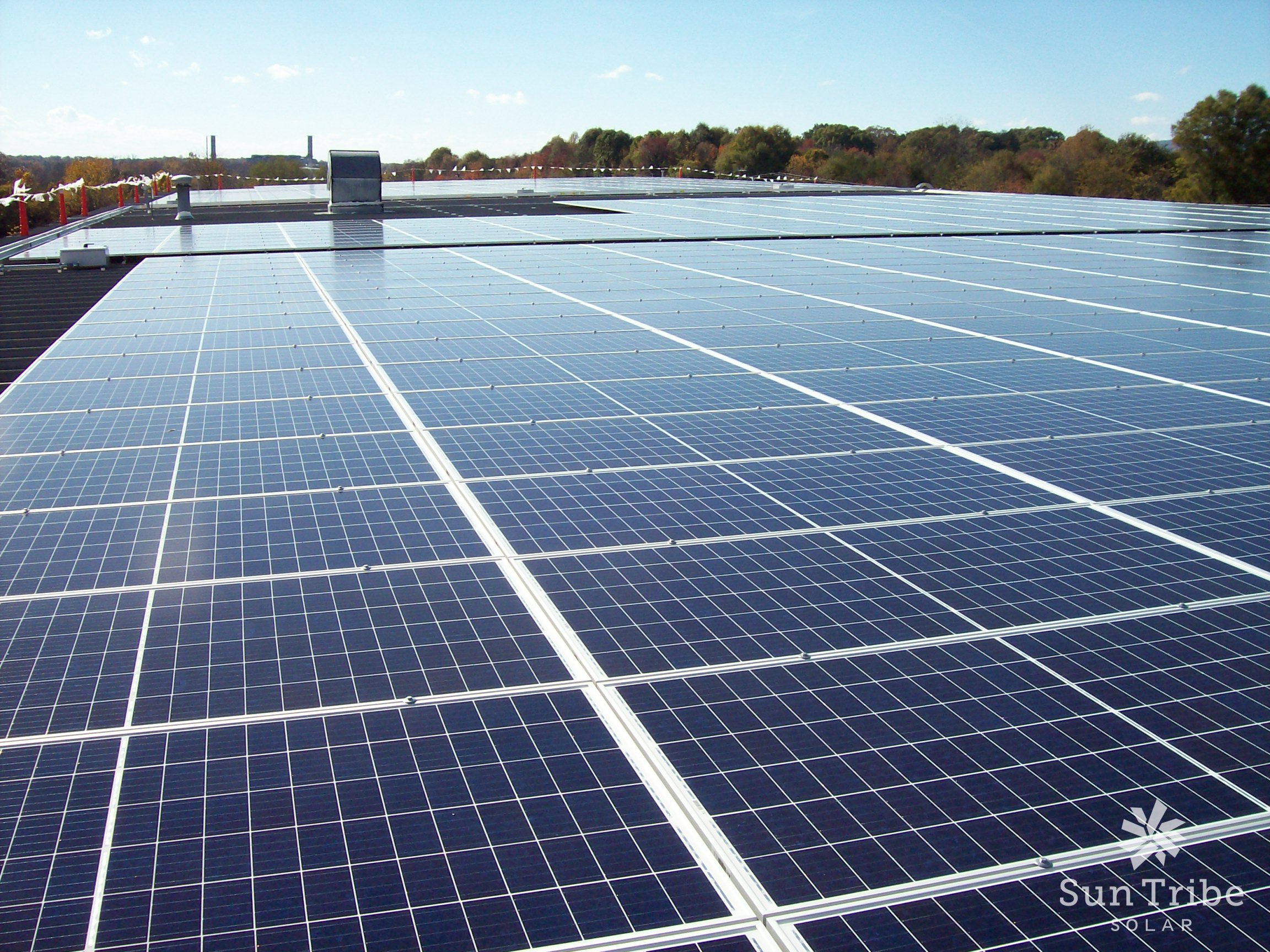How Does the New Climate Law Help Virginia Businesses?
This blog is the first in a series of blogs about the local implications of the historic climate legislation, the Inflation Reduction Act. In this post, our Director of Corporate Sustainability, Coles Jennings breaks down the good news for Virginia businesses and nonprofits.
We’re in a bit of a celebratory mood here at C3 on the heels of the passage of the Inflation Reduction Act (IRA) last week. After a sputtering decade of policy inaction, the climate community finally has some big wins to celebrate in the last few years, with the IRA being a major capstone: $370B in climate spending over the next ten years! This legislation puts the US’ Paris Accord target within reach, with a lot of work to do between now and 2030.
The IRA comes on the heels of some big climate achievements in just the last few years: emissions reduction pledges by cities and counties, the explosion of renewables onto the grid led by large corporations, and some major climate legislation here in Virginia. I sincerely hope that ten years down the road, we will look back at the IRA as a capstone of policies that set off a decade of definitive climate action.
There is a lot in the IRA, far more than can be digested in a single sitting. For a great overview, I recommend the summary from the Bipartisan Policy Center. There’s plenty to get excited about: support for new clean tech and carbon capture, decarbonization of heavy industry, and transformative rebates for cleaner and healthier homes.
Being the green business guy here at C3, I’m particularly excited about the tools that this bill will give to businesses and nonprofits for deep decarbonization. The first and most important step in this direction continues to be buildings. They remain the best opportunity for the commercial sector for two key reasons: first, they account for 30% of US emissions, and second, we already have all the technology we need to dramatically reduce their climate impact.
The IRA puts policy to work incentivizing organizations to reduce and clean up building energy consumption. This will happen mostly in two key areas: solar power and building energy efficiency, which is where I’ll focus today. I’ll follow up next week with a look at the impacts on commercial transportation and workplace support for electric vehicles.
Solar
Most of the boost to commercial solar deployment will come from two measures in the IRA: the Investment Tax Credit (ITC) and the Production Tax Credit (PTC). One important thing to note right up front is that these only apply to new solar installations, and only one can be applied to any given project. The credit selected will depend mostly on the size and how the project is financed (e.g. up front purchase or power purchase agreement).
Investment Tax Credit
The ITC is a one-time income tax credit that businesses receive to reduce the total cost of a solar installation. Some version of this credit has been around since 2005. Before this bill, the clock was ticking on the ITC, as it was on its way downhill in a planned phase-out period. The IRA bolsters this tax credit in several important ways:
Locks the credit back in at its historical maximum of 30% for the next 10 years.
Adds further credit to projects with domestically manufactured components, or located in communities impacted by fossil fuel extraction, or with a low-income community benefit. This applies only for systems under 1 MW.
Provides a direct-pay option for tax exempt entities, which have historically been excluded from this benefit.
Makes the tax credit payable to third parties in case the credit exceeds the tax liability of the owner. The credit can now be turned into cash quickly and easily.
These changes to the ITC introduce needed stability and flexibility to a very popular policy, one that is already greatly responsible for the growth in solar energy that we’ve seen in the last decade. In essence, the party continues, but it just got a fair bit cooler and a lot more people are now invited. Now there’s also this other little party that we need to talk about…
Production Tax Credit
This is the true game changer for large solar installations*. Instead of offsetting the initial cost of a solar system, the PTC will provide payments for the energy produced by solar systems. The expected payment for this year is 2.6 ¢/kWh, with the rate adjusted each year for inflation. To put in a better context, that is about 25% of our average electricity costs in Virginia. Solar is now getting a huge leg up on dirty energy. Speaking of parties!
Here again, projects with domestically sourced components and communities impacted by fossil fuel extraction receive additional incentives (sensing the theme now?).
Solar power had been left out of this particular fiesta since 2006, when the cost of solar power was through the roof. Solar is now much cheaper and has grown explosively without the benefit of the PTC. That should tell you all you need to know about how much this particular credit is going to boost solar installations. And that’s a great thing for the climate.
Building Energy Efficiency
While you’re at the solar parties, here’s a great way to make some new friends: talk to them about the IRS 179D tax credit for energy efficient commercial properties! Ok, maybe start with some lighter banter first…
As usual, common sense energy efficiency is not getting enough attention amidst the fanfare around more visible solutions like solar. 179D has been around for a while as a means to incentivize building owners to make their buildings more energy efficient. While relatively well known, it is still probably underutilized. Thankfully, much like the solar ITC, the IRA takes an already popular policy and makes it better:
Nearly triples the maximum tax credit, from $1.88/sf to $5.00/sf!
Relaxes the minimum energy savings from 50% to 25%, with a sliding scale up to 50% to achieve the maximum credit.
Applies the credit every three years instead of a one-time payment, as long as the building performance is maintained.
Simplifies the process by allowing for energy usage measurement to achieving certain targets, instead of requiring advanced software models (which can be expensive).**
Expands eligibility to non-profits, with a direct-pay option for non-profit building owners.
To visualize just how impactful these changes are, let’s look at the before and after perspective of a building owner. Let’s say you are the CEO of ACME Corp., and you have a 100,000 sf office building that is in need of a major renovation.
Before these updates, if you made sure to put a focus on energy efficiency in your renovations, you could get a one-time $188,000 tax credit to help reduce the cost of this work. Not bad at all, although you’d be paying a chunk of that to a consultant to do all the energy analysis for you.
After the changes to 179D, you can now get a $500,000 tax credit every three years! Of course, you want to be sure your upgrades will hit the target required for energy performance, so you may still be calling that consultant. But by prioritizing energy performance and maintaining it over the long haul, these renovations will be the gift that keeps on giving.
It’s also easy to envision a world where a portion of this tax credit is monetized and paid directly to a building management company to incentivize energy performance. Motivation to reduce energy use by property managers is something that is sorely lacking. There are some creative solutions out there, but this could provide a direct funding source.
Stay tuned for Part 2 on commercial fleets and customer/employee transportation!
—Coles Jennings
Helpful Links to Articles:
Full Bill Overview: https://bipartisanpolicy.org/blog/inflation-reduction-act-summary-energy-climate-provisions/
USGBC Breakdown (building focused): https://www.usgbc.org/resources/inflation-reduction-act-buildings-provisions
SEIA Breakdown (solar focused): https://www.seia.org/sites/default/files/2022-08/Inflation%20Reduction%20Act%20Summary%20PDF%20FINAL.pdf
*At time of writing, the lower limit is understood to be 150 kW.
**Exact guidance on performance-based credit is pending from the Department of Energy.


